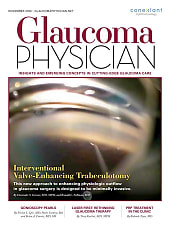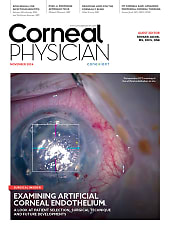A $3.5 million study of patients with gyrate atrophy that recently begun enrolling patients, the Gyrate Atrophy Ocular and Systemic Study (GYROS) will help researchers design future clinical trials for an emerging gene therapy for gyrate atrophy, a progressive retinal disease that causes night blindness and loss of peripheral vision, in addition to severe childhood-onset myopia.
GYROS will follow 45 participants with gyrate atrophy for 4 years across 12 clinical research sites from the Foundation Fighting Blindness's Clinical Consortium. Several imaging and visual function tests will be performed during the study to better understand how this condition affects the retina as well as the rate of disease progression. GYROS will help clinical researchers identify outcome measures and participants for clinical trials of emerging therapies. Enrollment in GYROS began in November 2023, with the study expected to run through January 2028.

Gyrate atrophy is caused by mutations in the ornithine aminotransferase (OAT) gene and inherited in an autosomal recessive pattern. People with gyrate atrophy are unable to metabolize the amino acid ornithine (produced from its precursor, arginine) and ornithine accumulates in their plasma and tissues. Some individuals with gyrate atrophy follow an arginine-restricted (low-natural protein) diet, prescribed only by a doctor, to reduce arginine intake and slow the progression of retinal degeneration. The diet, however, is highly restrictive and difficult to follow. A gene therapy approach could help to avoid the need for restrictive dietary control and lead to better vision outcomes over the long term.
Mandeep S. Singh, MD, PhD, an associate professor of ophthalmology and genetic medicine and the codirector of the Genetic Eye Diseases (GEDi) Center at the Johns Hopkins Wilmer Eye Institute in Baltimore, and David Valle, MD, professor of genetic medicine and former director of the McKusick-Nathans Department of Genetic Medicine at Johns Hopkins University, are the lead investigators for the study. According to the Foundation Finding Blindness, Drs. Singh and Valle are developing a systemically delivered gene therapy for gyrate atrophy in collaboration with Jefferson Doyle, MD, PhD, MHS, an assistant professor of ophthalmology and genetic medicine at the Wilmer Eye Institute.
Click here to read a recent New Retinal Physician case report about a patient with gyrate atrophy.
The Jaeb Center for Health Research is the study sponsor and coordinating center for GYROS. The Foundation Fighting Blindness is providing $1.8 million in funding for the study, while the US Food and Drug Administration is providing a $1.6 million grant and Conquering Gyrate Atrophy, a nonprofit research and advocacy organization, is contributing $100,000 to fund GYROS.
“We are excited to lead a world-class collaboration that's enabling the research community to better understand how gyrate atrophy affects the retina and vision in patients,” Todd Durham, PhD, senior vice president, clinical and outcomes research, at the Foundation Fighting Blindness, said in a news release. “GYROS results will be essential to the design and launch of the planned gene therapy clinical trial, and ultimately, getting a vision-saving treatment out to the people who need it.” Karabi Acharya, ScD, the founder of Conquering Gyrate Atrophy, added, “This is a huge step towards finding a cure for gyrate atrophy and provides hope to patients and families.”
Additional information about GYROS, including a list of participating sites, is available at clinicaltrials.gov (NCT05312736). NRP








